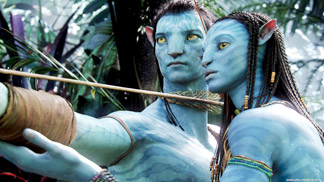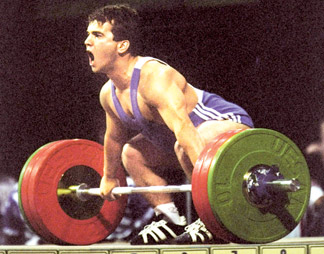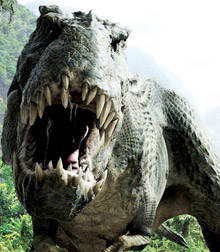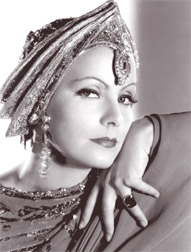Race to the bottom of the sea
 Nalaka Gunawardene and Vindana Ariyawansa Nalaka Gunawardene and Vindana Ariyawansa
As Sir Arthur C Clarke once remarked, “How inappropriate to call this
planet Earth when it is quite clearly Ocean!” The ocean covers 71
percent of the Earth’s surface and contains 97 percent of the planet’s
water, yet most of the underwater world remains unexplored.
It is ironic yet true that we know more about the Moon than about the
ocean depths on our own planet Earth. Although a dozen men have walked
on the moon, just two have travelled to the farthest reaches of the
ocean, and that too, only for about 20 minutes it happened back in 1960.
However, this is slowly changing as new momentum is gathering in
exploring the ocean and commercially exploiting the mineral wealth of
ocean. Early space exploration was fuelled by the Great Space Race
between the United States and the Soviet Union, as part of the Cold War
that ended in 1990. The new race to the bottom of the ocean seems to be
turning into a competition between the United States and China.
We open today with some questions from this latest quest.

1 In July 2011, a manned Chinese underwater craft reached 5,057
metres below sea level in an international area of the Pacific Ocean.
The crew - Tang Jialing, Fu Wentao and Ye Cong – plan to return in 2012,
when they want to descend even deeper to 7,000 metres. What is the name
given to their titanium-hulled 26ft-long craft, which is named after a
mythical Chinese sea dragon?
2 The Chinese descent to the depths of the Pacific Ocean in July 2011
happened more than 50 years after the fabled bathyscaphe Trieste
descended to 10,916 metres below the surface to the bottom of Challenger
Deep, the lowest point of the Pacific’s Mariana Trench, on 23 January
1960. The Trieste, a 7 feet-wide sphere with 5-inch thick steel walls,
resembling an underwater hot-air balloon, took the son of its Swiss
inventor and a US naval officer to where no human had been before (or
since). They reported back seeing vast sums of shrimp swimming past. Who
were these pioneering ‘aquanauts’?
3 A well known film director, with a long-standing interest in deep
ocean exploration, wants to film scenes for the sequel to blockbuster
2009 movie at 7,000 metres below surface. He is believed to have
commissioned a bespoke submarine to plunge seven miles beneath the
surface. He plans to use the hi-tech, electric motor-powered craft to
shoot 3D footage which will be incorporated into the movie’s sequel, set
in the teeming oceans of an alien planet. Who is this film director?
4 On March 1, 2011, a Maldivian national became the Secretary General
of the South Asian Association for Regional Cooperation, SAARC. This is
the first time a woman has become the head of the SAARC Secretariat, and
she is also the youngest to assume this position. Who is she?

5 Referring to whom did Albert Einstein once say: “Generations to
come will scarcely believe that such a one as this walked the Earth in
flesh and blood”?
6 Film director Steven Spielberg recently said that a fourth
'Jurassic Park' film may be only a few years away. Apparently he has a
story and a screenwriter for the next installment of his blockbuster
franchise about prehistoric reptiles brought into modern times through
cloning. Starting in the early 1990s, Jurassic Park has been the theme
of three feature films, comics, and videos. It started in 1990 when
Universal Studios bought the movie adaptation rights to a science
fiction novel called Jurassic Park before it was even published. Who
wrote it?
7 Both the novel Jurassic Park (1990) and first movie based on it
that Steven Spielberg directed (and released in 1993) were highly
popular worldwide. At the request of both Spielberg and numerous
readers, the novelist wrote a sequel, which was titled The Lost World
and published in 1995. Spielberg used it as the basis for The Lost
World: Jurassic Park which came out in 1997. The novelist acknowledged
at the time that he had taken some elements from a novel by the same
name published in 1912 which related an expedition to the Amazon in
South America where prehistoric animals (dinosaurs and other extinct
creatures) still survive. Name the well known English writer who wrote
The Lost World, the original.

8 Robert Ettinger, an American academic and science fiction writer,
who died on 23 July 2011 was known as the father of cryonics – the
practice of deep-freezing people (or animals) immediately upon death in
the hope that medical advances in the future might enable their
resurrection. While the future technologies for cell repair envisaged by
cryonics are currently speculative, some 100 people have been
cryonically preserved after death and another 1,000 people living have
paid up to be frozen when they die. Name the 1962 book by Ettinger where
he first outlined this prospect, that later led to the practice of
cryonics.
9 Among the living persons who are considering being cryonically
frozen upon death, to be revived by future medical advances, is the
popular British television personality Simon Cowell. When he discussed
this with a leading British political figure, the latter had replied:
“I’m not sure my coming back from the dead would be popular”. Whose
words are these?
10 Born in Bulgaria of Turkish descent, this sportsman was nicknamed
'Pocket Hercules' due to his small stature (4 feet and 10 inches in
height). He won three Olympic Championships (in 1988, 1992 and 1996),
seven World Championships and six European Championships, and set 46
world records in weightlifting. In 1988, Turkey paid Bulgaria $1 million
to allow him to compete for Turkey in Seoul Olympics. Who is this
Champion weightlifter?

11 This chemical element was first created in a laboratory in 1996 by
Professor Sigurd Hoffman and his team of at GSI Helmholtz Centre for
Heavy Ion Research in Germany. It is the element No 112 in the Periodic
Table, and has been named by the International Union of Pure and Applied
Chemistry (IUPAC) with the symbol Cn, in honour of a 15th Century
astronomer. What is the name of this element?
12 The countries of Rwanda and Burundi, as well as Tanganyika (the
mainland part of modern day Tanzania), were formerly a single colony of
a European country. By what collective name were they known between 1885
and 1918? The territory was known by this name from the mid 1880s until
the end of the First World War, when it was taken over by Britain and
Belgium. Spread over an area of 994,996 square km, the three constituent
countries today have a combined population of more than 60 million.
13 Margareta Gertrude Zelle was born in August 1876 in the
Netherlands. She became an exotic dancer with a wide following in Paris,
but was accused spying for Germany during the First World War and was
arrested in France. Convicted of being a double agent, she was killed by
a firing squad on 15 October 1917. She was much better known by her
adopted stage name. What was it?

14 A time zone is a region that has a uniform, legally mandated
standard time. Under a universally accepted system, a time change of one
hour is required for each change of longitude by 15 degrees. Most large
countries around the world have multiple time zones within their
territory: examples include Australia, Russia and the United States.
What is the largest country (size-wise) to maintain a single time zone?
Clue: This country had five time zones before 1949.

15 Tareque Masud, one of Bangladesh’s leading film makers, was killed
on 13 August 2011 in a road accident which also seriously injured his
film maker wife Catherine. At the time of Masud’s death, the couple was
working on their next feature film, titled The Paper Flower, which deals
with the problems of the partition of the Indian subcontinent. It was
going to be a ‘prequel’ to his first feature film, the first Bangladeshi
film to win a prize at Cannes film festival in 2002, it was awarded the
International Critics’ award (Fipresci) for its “authentic, moving and
delicate portrayal of a country struggling for its democratic rights”.
That film was the first selected by Bangladesh to compete for an Oscar
for best foreign-language film, and to be given wide international
distribution. What was its title?
Answers will be published next week.
Last Week’s Answers
1. The Island President
2. President Maumoon Abdul Gayoom
3. Atholhu
4. Planet Jupiter
5. Pierre Boulle (1912 – 1994)
6. Franklin J Schaffner
7. Arthur C Clarke (in a new, post-Apollo preface to his 1951 novel,
Prelude to Space)
8. The LandMaster tractor
9. Italy, Germany and Japan
10. Eileen Siriwardena
11. Helsinki, Finland
12. Nitrous Oxide
13. Roger Milla
14. International Federation of Gymnastics
15. Elle |



